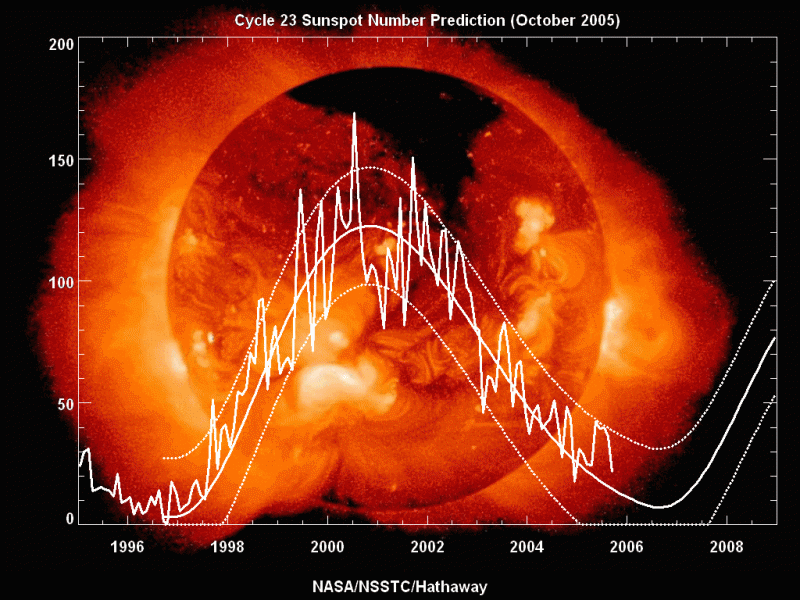 The Sun follows a periodic cycle of activity. This cycle, called the Solar Cycle or Solar Magnetic Activity Cycle, is the periodic recurrence of sunspots, or darker, relatively cool regions at the Sun's surface. This was discovered by Samuel Heinrich Scwabe in 1843 when he observed the variation of the number of sunspots over a seventeen-year period. The solar cycle usually lasts about eleven years on the average.
The Sun follows a periodic cycle of activity. This cycle, called the Solar Cycle or Solar Magnetic Activity Cycle, is the periodic recurrence of sunspots, or darker, relatively cool regions at the Sun's surface. This was discovered by Samuel Heinrich Scwabe in 1843 when he observed the variation of the number of sunspots over a seventeen-year period. The solar cycle usually lasts about eleven years on the average.
It has two extremes: the solar maximum is the period on the cycle where solar activity on the Sun is at its highest, while the solar minimum, on the other hand, is the period where solar activity is at its most quiet, sometimes, even absent. sunspots during the solar maximum stage will be large and will sometimes last for weeks, while sunspots during the solar minimum stage will be short-lived and tiny, They are usually concentrated around the equator as the cycle goes on; no sunspot can be observed above latitudes of seventy degrees.
Starting with the first observed solar cycle in 1745 by Rudolf Wolf as Solar Cycle 1, scientists and astronomers have adapted a system of naming solar cycles. The most recent cycle was Solar Cycle 23, which started in year 2000 and ended in year 2009. The length and magnitude of solar cycles varies, with cycles ranging as short as nine years up to long cycles of fourteen years.
The “deep” solar minimum of 2008 is an example of these variations; the solar minimum lasted unusually long, with 266 days out of the year's 365 days without sunspots- the least number of sunspots recorded since 1913. We are two years into the current cycle, Solar Cycle 24, which started with the solar minimum in 2008. It was predicted that this cycle will be lower in intensity than past solar cycles, making it one of the smallest cycles in the last 200 years.
